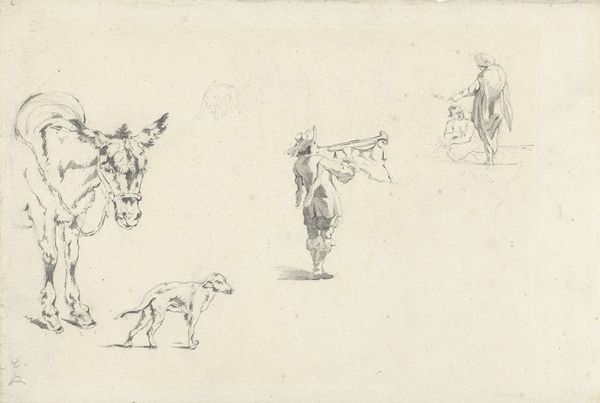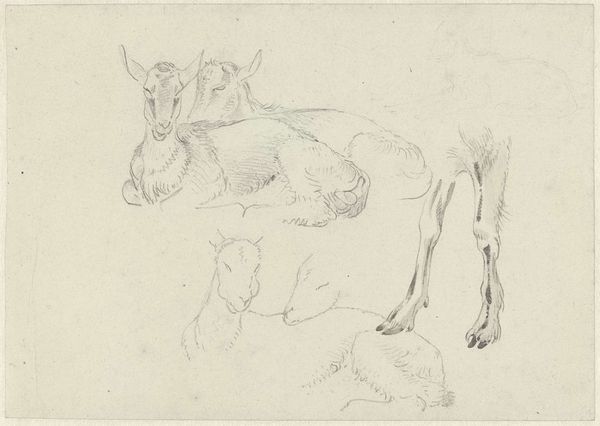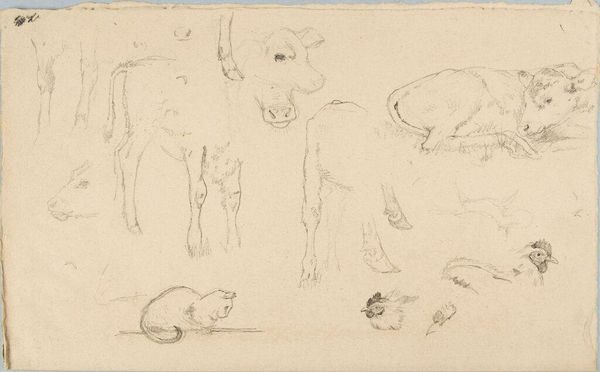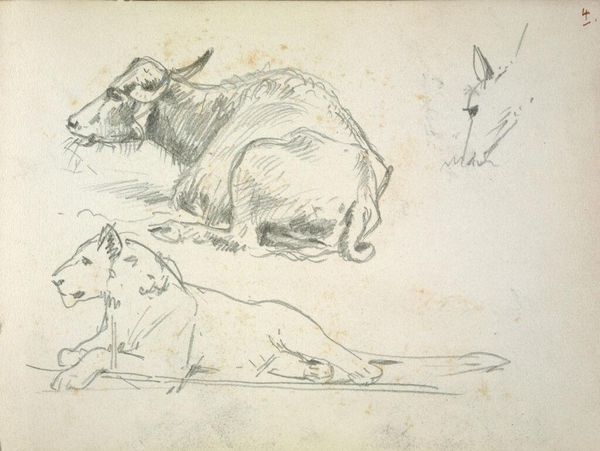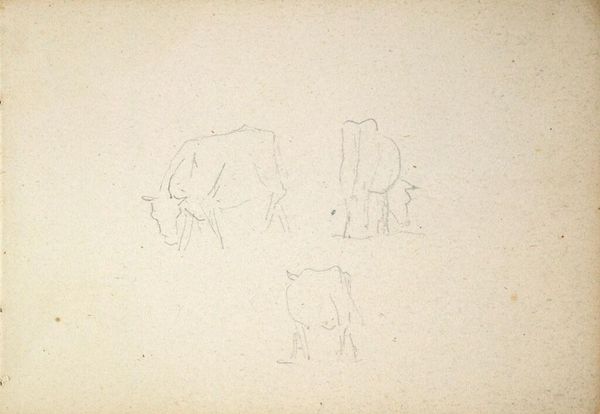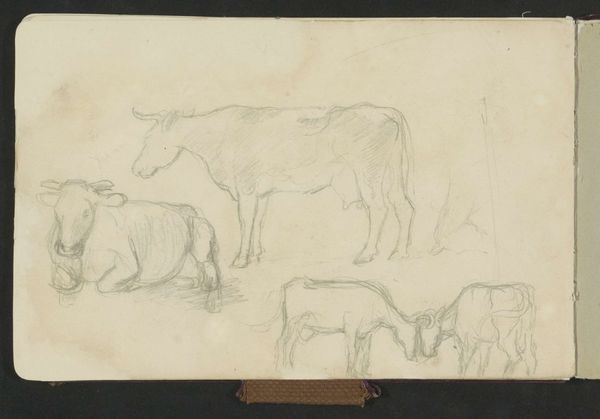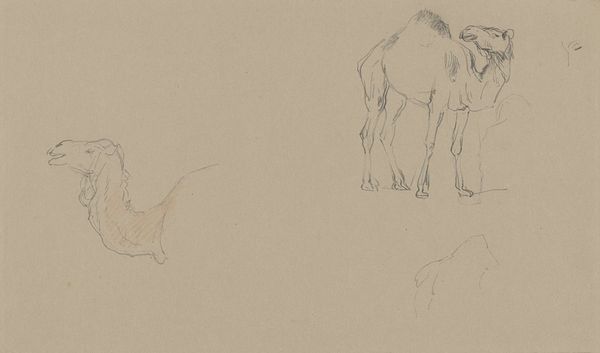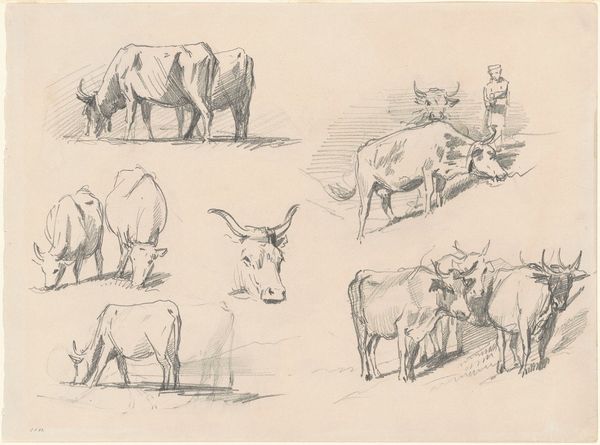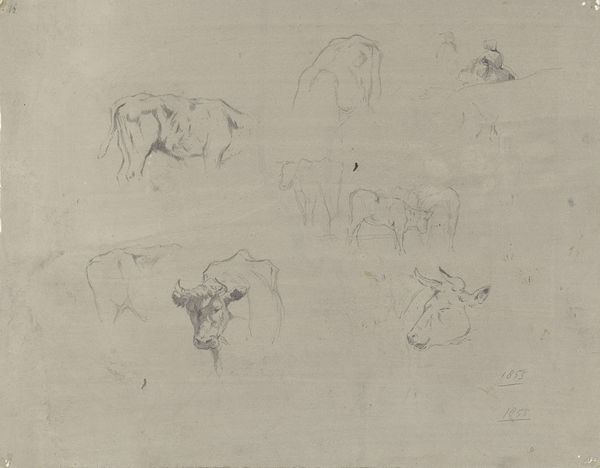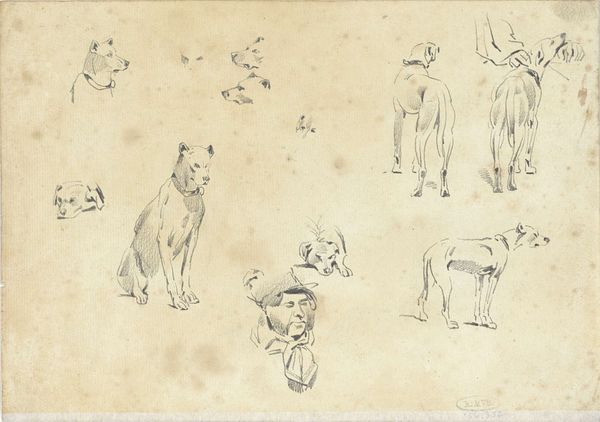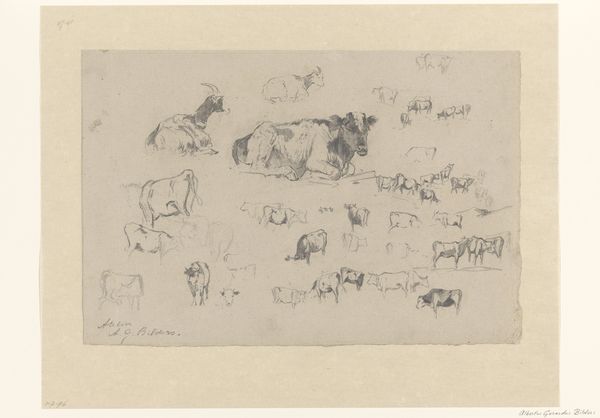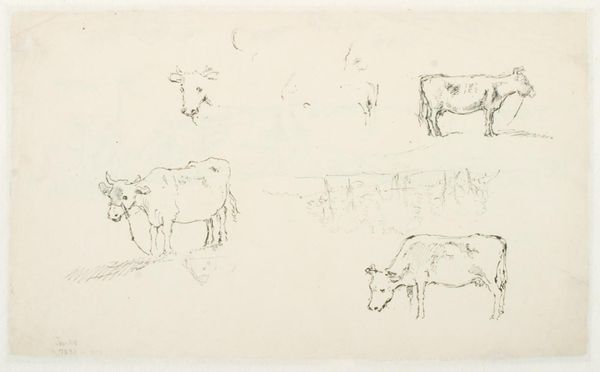
drawing, paper, pencil, graphite
#
drawing
#
amateur sketch
#
light pencil work
#
pencil sketch
#
sketched
#
incomplete sketchy
#
landscape
#
study drawing
#
paper
#
idea generation sketch
#
detailed observational sketch
#
pencil
#
rough sketch
#
graphite
#
realism
#
initial sketch
Dimensions: height 188 mm, width 313 mm
Copyright: Rijks Museum: Open Domain
Editor: Here we have Gerard Bilders' "Studies van koeien," created with graphite and pencil on paper sometime between 1848 and 1865. I'm struck by how economical the lines are, capturing the essence of these animals. What do you see in this piece? Curator: The most compelling aspect is the interplay between form and void. Consider how Bilders utilizes negative space, allowing the untouched paper to define the contours of the cows just as much as the graphite lines themselves. How do these empty spaces affect the overall composition? Editor: They make it feel less like a complete picture and more like a collection of fleeting observations. The cows seem to emerge and recede, like glimpses caught in a field. Curator: Precisely. Observe the variation in the density of the pencil strokes. In some areas, the lines are barely perceptible, almost ghostly. In others, particularly in the head of the cow at the lower right, there is a concentrated build-up of graphite. How does this variation impact the perceived depth and texture? Editor: It creates a sense of dimension, giving that particular cow a greater feeling of presence. It makes her seem more solid compared to the others. Curator: Indeed. It highlights how through subtle shifts in tone and line quality, Bilders directs our eye and establishes a hierarchy within the composition. A structuralist reading would dissect these choices as carefully arranged signifiers. What, ultimately, do you believe is the impact of Bilders' methodology? Editor: I now understand how the visual presentation of these studies makes them so interesting, using the composition and tone to affect the meaning, not just the content. Curator: Yes, by analyzing the relationships between these formal elements, we can grasp the underlying structure of the artwork and appreciate the intentionality behind every mark.
Comments
No comments
Be the first to comment and join the conversation on the ultimate creative platform.
